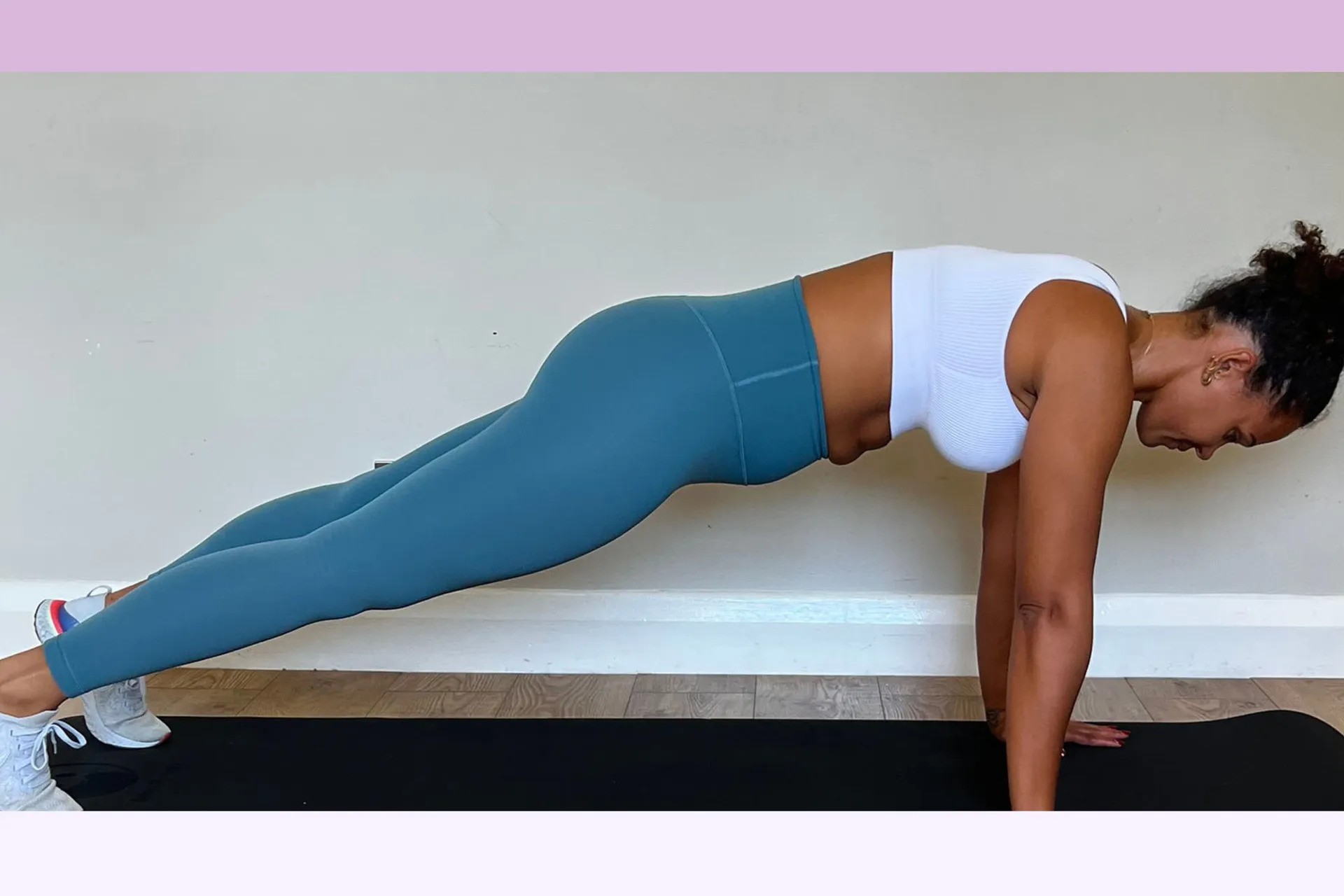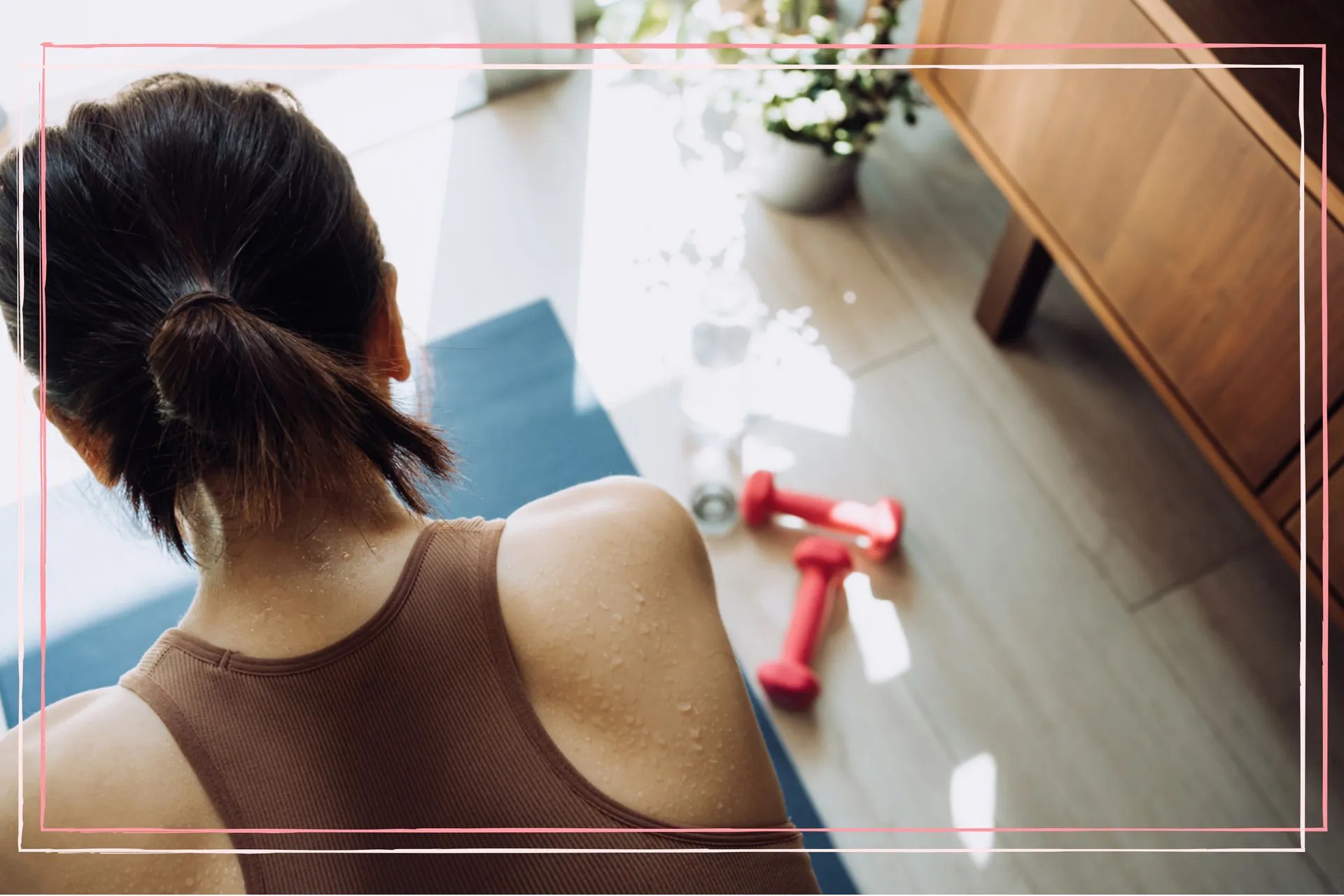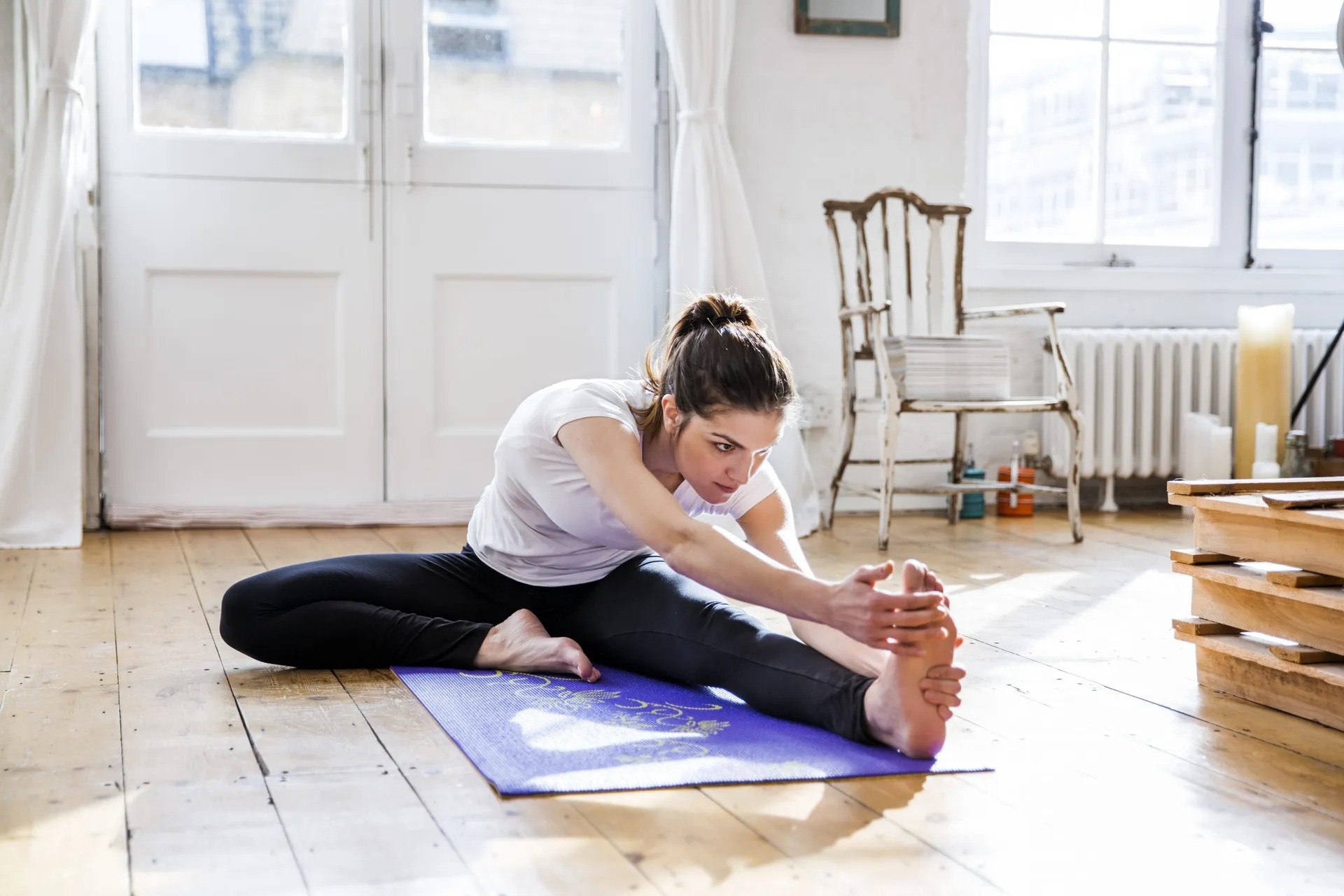The 30-day plank challenge: How to strengthen your core and tone up
Spend just a few minutes daily and tone up without any equipment following our 30-day plank challenge
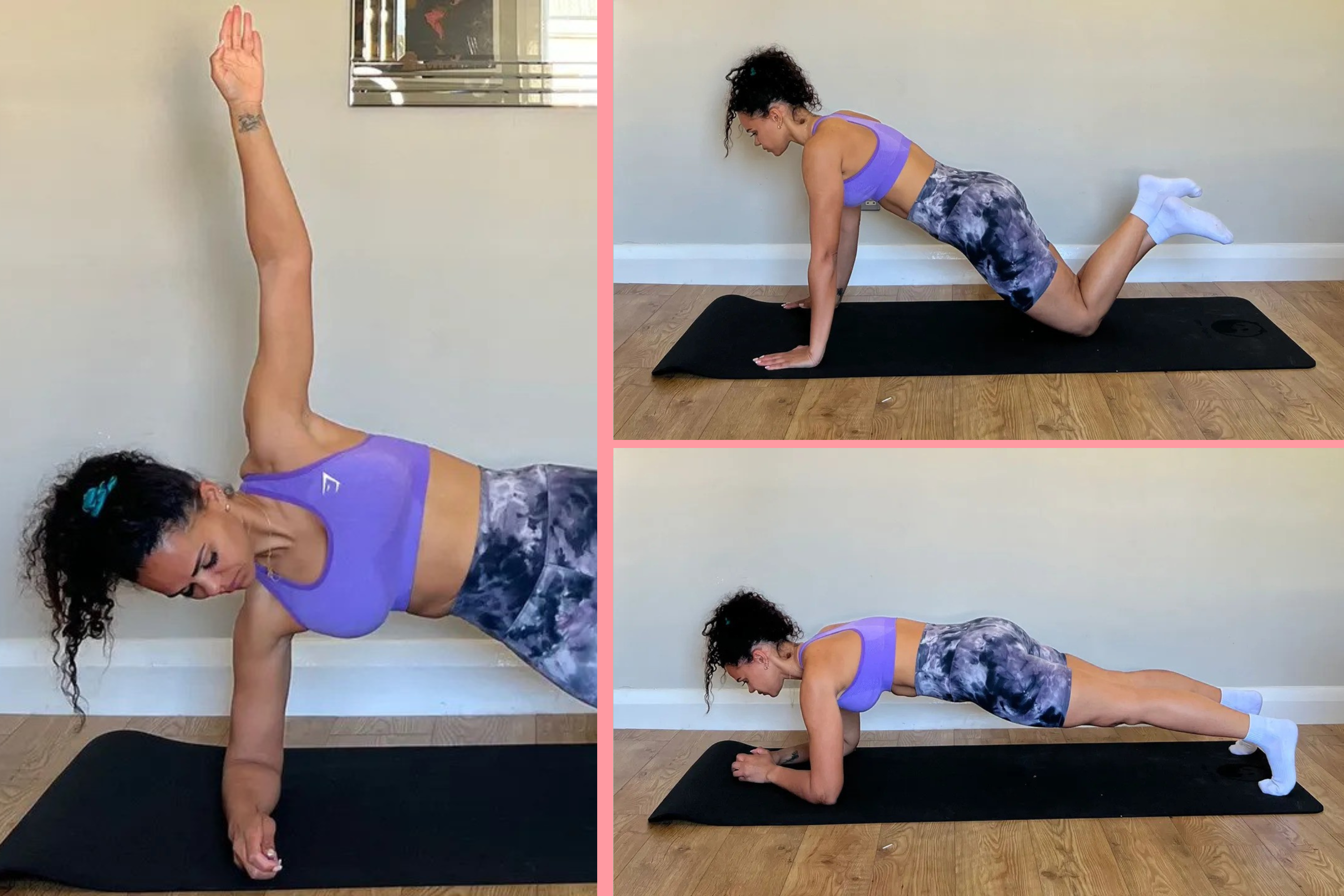

Mastering the perfect plank isn't just about holding the pose – it's a gateway move to more core strength and stability after giving birth.
When it comes to building up your fitness after you've given birth, a challenge such as the couch to 5K plan or learning how to do the perfect push-up are great ways to track your progress and achieve your goals. Whether you're a new mum who's had the green light to exercise by their doctor or a fitness enthusiast looking for a new challenge, understanding how to do this deceptively simple exercise can transform your workout routine.
The plank is an abdominal exercise that will strengthen core muscles and tone the stomach; the idea is to stay in the plank position for as long as possible to see the maximum benefit. Research published in the Journal of Physical Therapy Science has proved that planks can increase your core strength and stability. This, in turn, means that you'll be at less risk of injury, especially related to your lower back, according to a study published in the International Journal of Science and Research.
Overseen by fitness expert Jade Hansle, the 30-day plank challenge will also help you stay focused and motivated as you gradually manage to hold the positions for longer periods of time. The plank is a great way to still your mind whilst exercising, you’ll have to concentrate while holding the plank in the correct position.
One of the best things about the plank is that it’s absolutely free to do because you don’t need exercise equipment – but, it is important you follow our expert advice below to get your technique right. Jade explains: "Making sure your form is correct is super important during exercise. Perfecting form will boost performance, conserve energy and overall reduce the risk of injury," she advises.
The 30-day plank challenge
The 30-day plank challenge takes the concept of the classic plank and ramps it up with several variations and progressions to isolate your side muscles (obliques). Beginning with three x 20 second holds for the classic plank, you’ll gradually build up to three x 60 seconds hold for the classic plank, as well as the extended arm plank, and up and down planks. In the video and photos below, Jade shows you exactly how you can perform each plank exercise at home – no personal trainers or equipment needed. Within the 30-day plank challenge, you’re also encouraged to give your body a rest every six days to enable your muscles to recover.
Jade explains: "If you continue to use the same muscle group day in, day out they are in a constant state of effort. This can lead to exhaustion, imbalances and also mean you are more prone to injuries. A rest day gives the tissue the time they need to repair, grow and get stronger."
GoodtoKnow Newsletter
Parenting advice, hot topics, best buys and family finance tips delivered straight to your inbox.
The fitness challenge is easily set out in our downloadable PDF so you can see exactly which exercise you need to do each day of the month. To start your 30-day plank challenge, all you need to do is download the plan, print it out, and stick it somewhere that will remind you every day to do your planks. Alternatively, you could just save it to your phone, so it's always handy when you have a few minutes to spare.
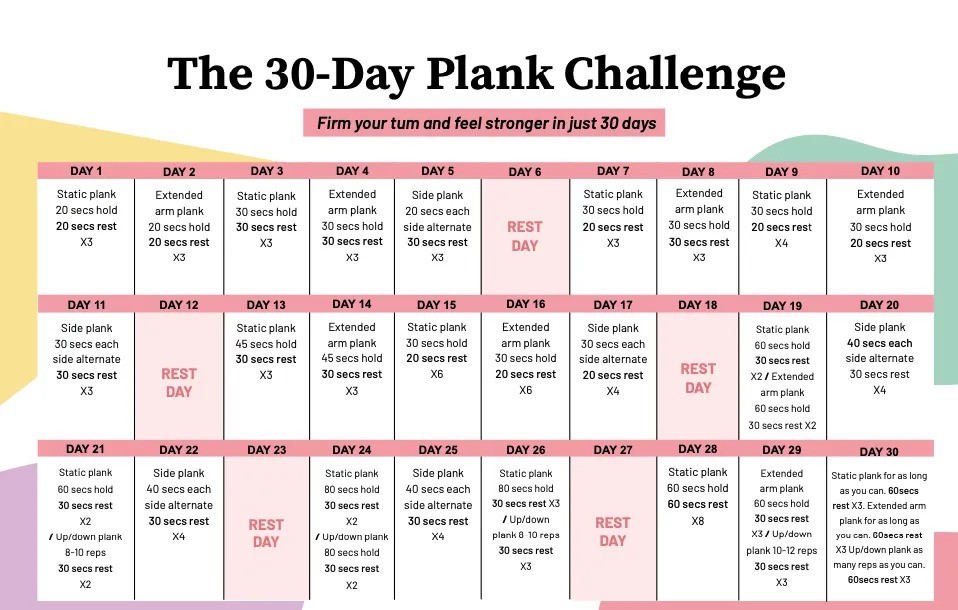
The 30-day plank challenge PDF
The 6 plank variations to complete the 30-day challenge
Although the plank is a basic exercise, there may be some instances where your core isn't quite strong enough yet, like if you're training postpartum or recovering from an injury. The good news is, the plank can be modified to suit your ability, so if you find the first static plank position too challenging, you could start with your knees on the floor. Go back to basics by starting kneeling down and bringing yourself into an all-fours position, resting on your knees and palms. Keep your arms straight, directly under your shoulders, and also shoulder-width apart. Lean forward slightly so your body is at a slight 45-degree angle. Engage your core and hold this position.
1. Static plank position
- Lying on your front, bring your elbows underneath your shoulders.
- Engage your core and lift yourself up onto your toes and elbows.
- Ensure that your hips aren't too low or high, also ensure your lower back isn’t arched, scoop your pelvis to the front to stop this from happening.
- Draw your shoulder blades back to ensure your back isn't too round.
- Hold this ‘plank’ position for at least 20secs ensuring the tummy muscle stay engaged throughout.
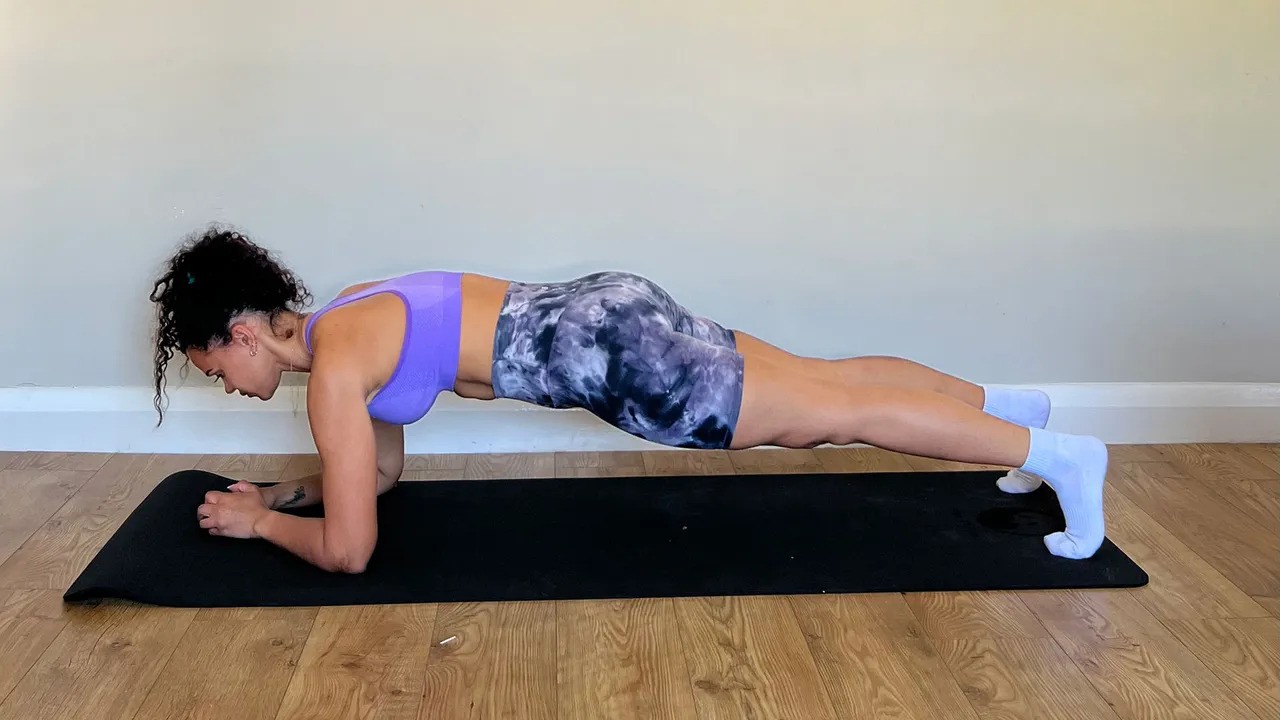
The static plank position
2. Modified planks
- Start by kneeling down and bringing yourself into an all-fours position, resting on your knees and palms.
- Keep your arms straight, directly under your shoulders, and also shoulder-width apart.
- Lean forward slightly so your body is at a slight 45-degree angle.
- Cross your legs at the ankle.
- Engage your core and hold this position.
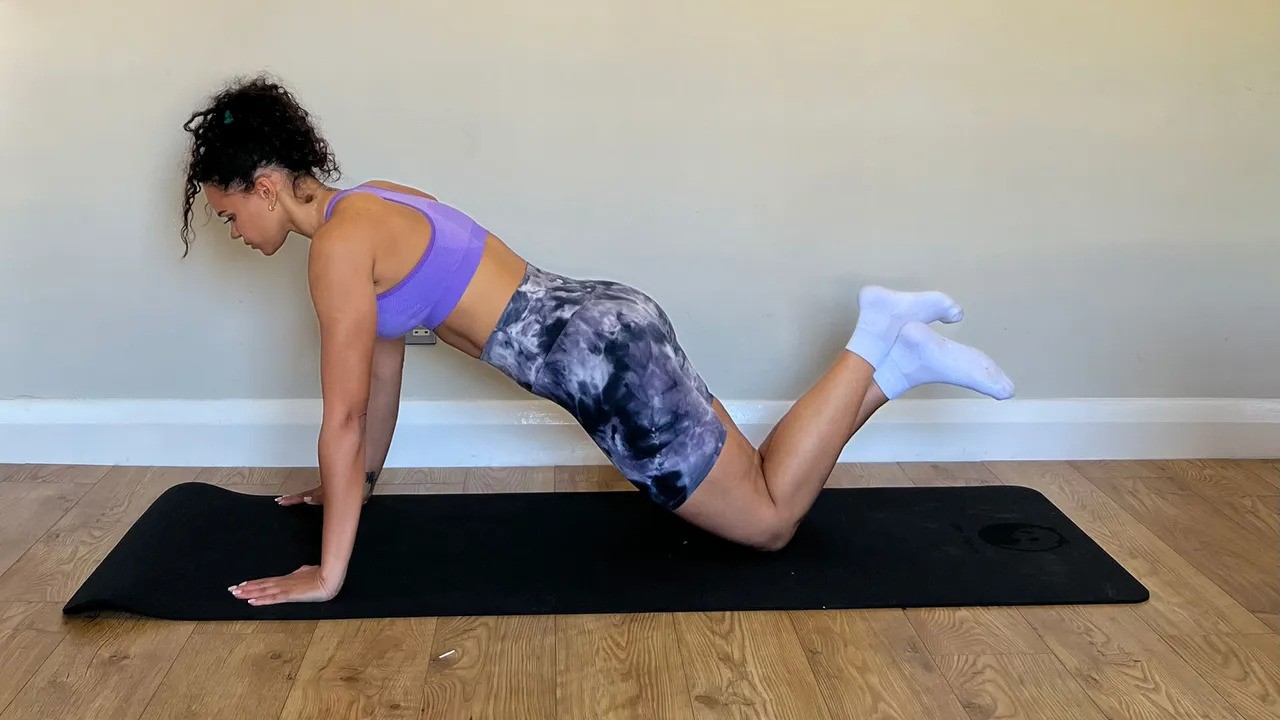
The modified plank
3. One arm plank position
This variation to the classic static plank on elbows simply requires you to adopt the same body position but with one arm behind your back, so you’re balancing on one hand and toes.
- Lying on your front, bring your arms underneath your shoulders.
- Pulling your tummy muscles in and lifting yourself up onto your toes and elbows.
- Keep the tummy muscles pulled in (belly button to spine) throughout the exercise.
- Place one hand behind your back and hold.
- Ensure your chest remains over your hands, otherwise, your shoulders will get tired before your core.
"The one-arm plank position changes the angle and demand on your core muscles”, says Jade. “As well as adding another dimension of stability challenge to your shoulders and arms."
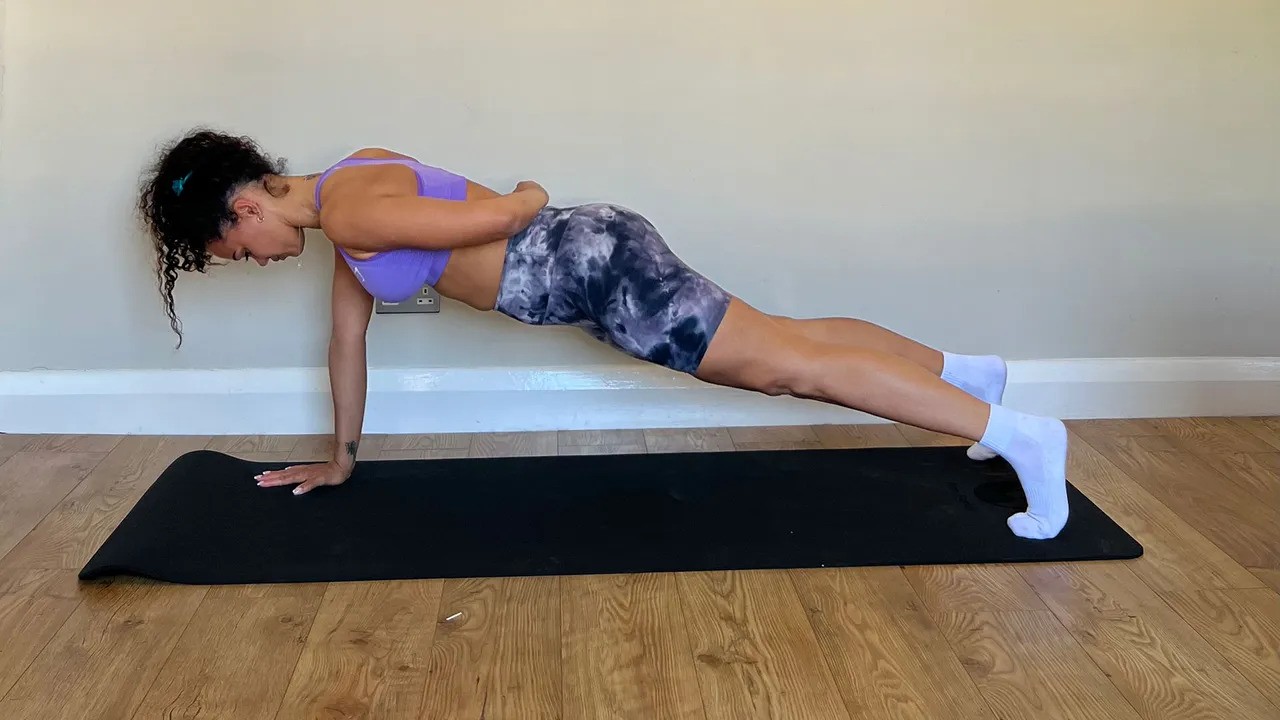
The one-arm plank
4. Side plank position
- Lying on your side, place your forearm on the floor ensuring your elbow is parallel with your shoulder.
- Stack your legs and feet on top of each other and steady your balance.
- Pull your tummy muscles in then lift your hip off the floor, pushing it up towards the ceiling.
- Raise your other arm towards the ceiling, keeping your head in line with your spine.
“This variation places an emphasis on your obliques (side abs) and will help to strengthen your shoulders”, says Jade. “The side plank can be a bit trickier as it involves balance and using your stabiliser muscles.”
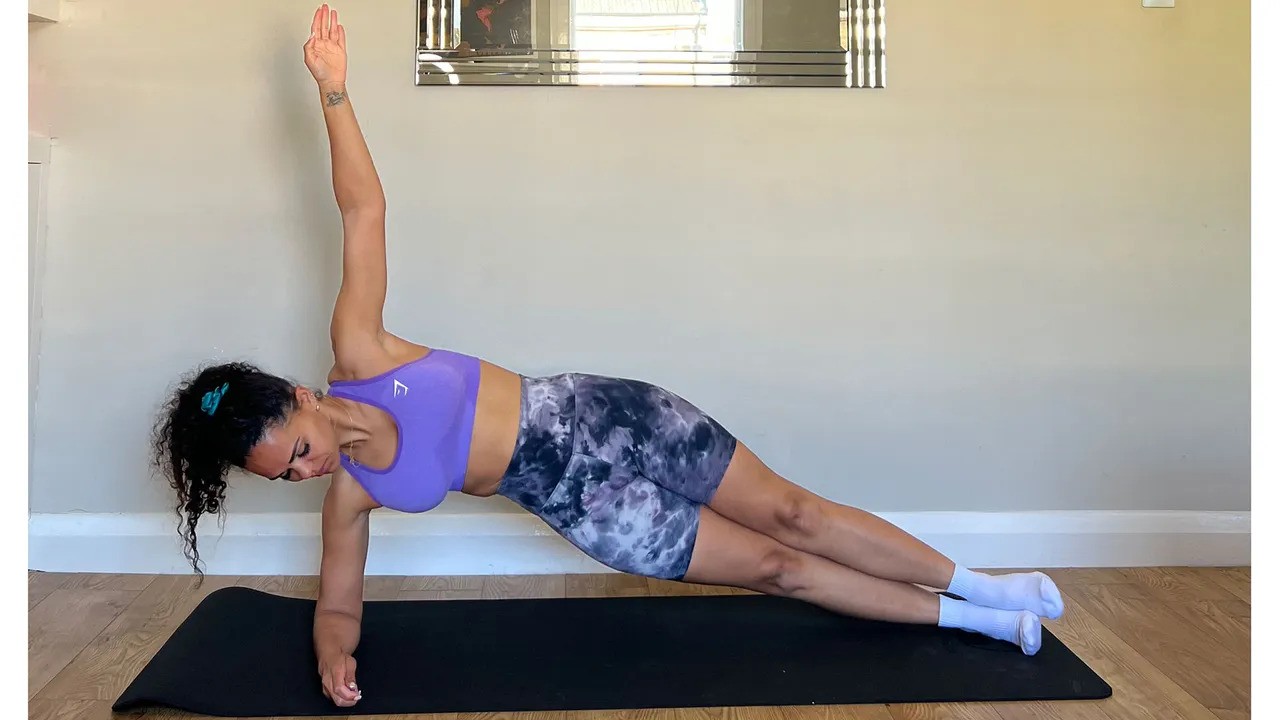
The side plank position
5. Modified side plank
If you’re not strong enough for the full side plank, start with this modified position. In this move, you’ll need to bend one leg underneath your hips and balance on one knee, rather than stacking your legs on top of each other.
- Lying on your side, place your forearm on the floor ensuring your elbow is parallel with your shoulder.
- Rather than stack your legs and feet on top of each other, bend one leg underneath your hips and balance on one knee.
- Pull your tummy muscles in then lift your hip off the floor, pushing it up towards the ceiling.
- Raise your other arm towards the ceiling, keeping your head in line with your spine.
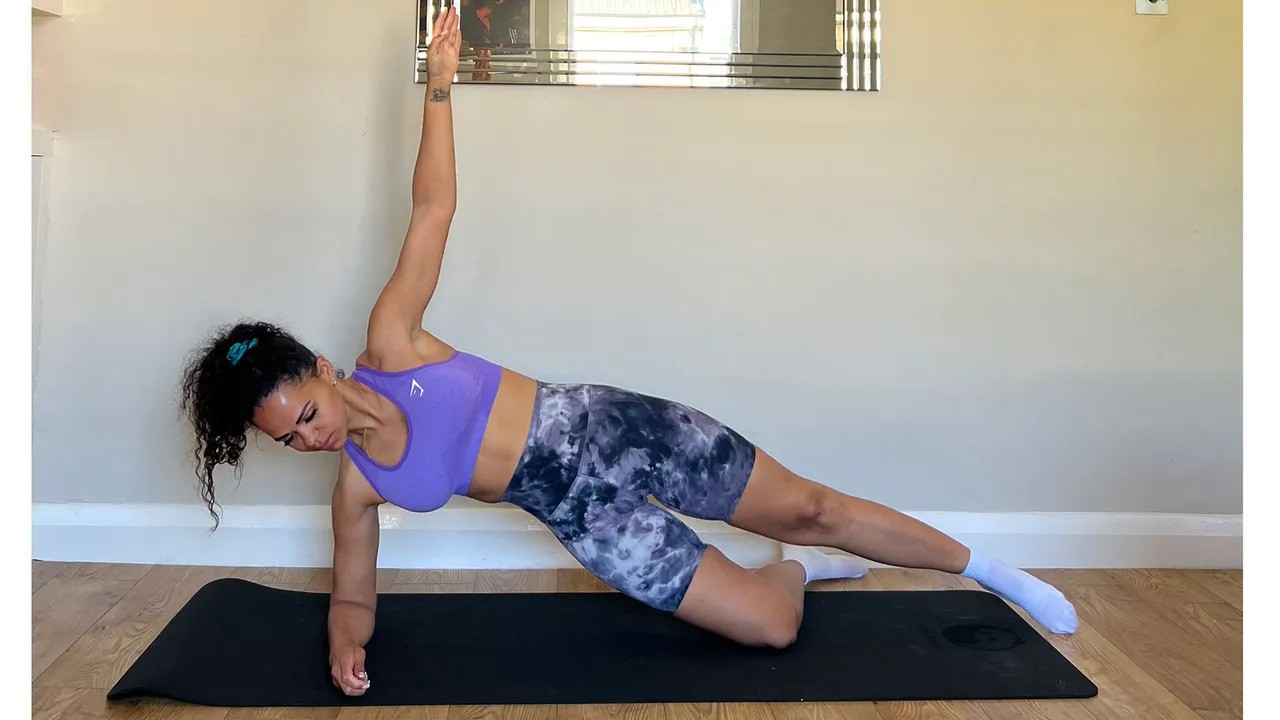
The modified side plank position
6. Up and down plank
This advanced core and upper body exercise starts with the original static plank position and ends in the extended arm plank position. The challenge lies in moving the body from one position to the other.
- Lift one arm and take the hand of the arm to where your elbow was.
- Then push through that hand and use your core while you repeat the same movement with the other arm.
Jade tells us: "It is crucial that you keep your tummy tight throughout, and the distance you place your feet apart hugely affects the difficulty level, so the wider the feet means the easier the movement (as you have increased stability)."
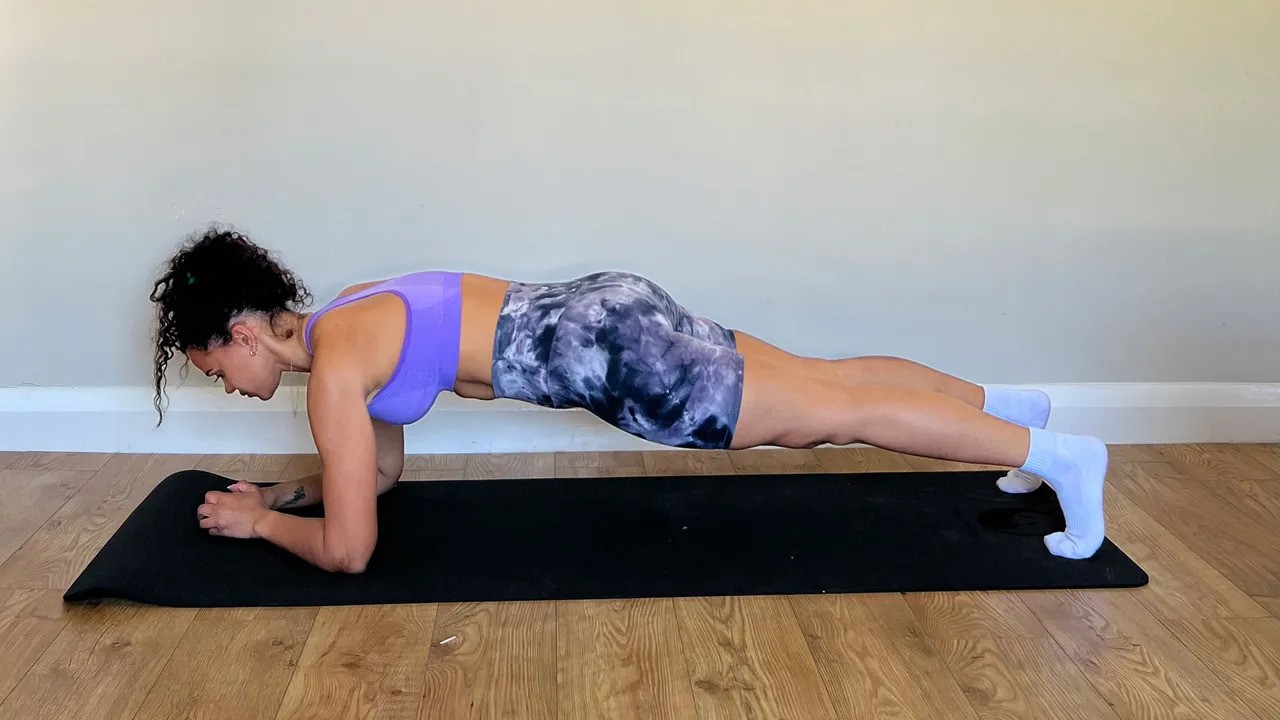
The 'down' position of the up and down plank
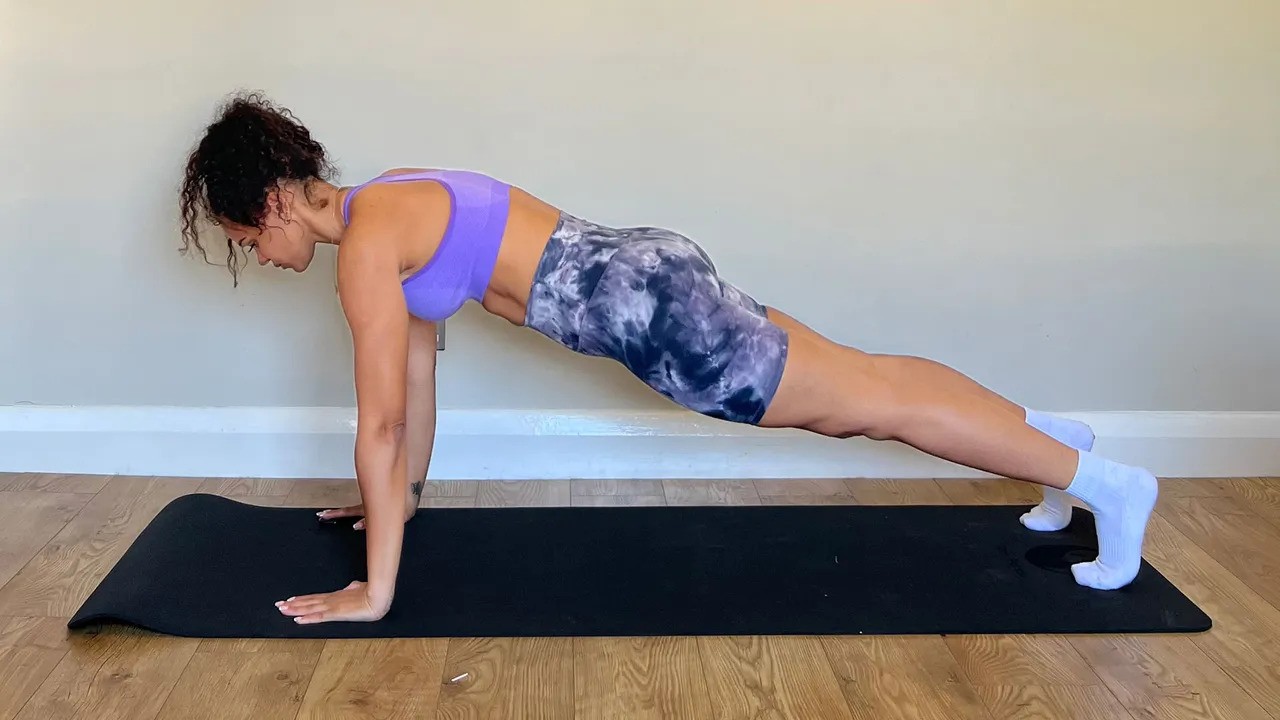
The 'up' position of the up and down plank
Back, chest, and core stretches
It’s really important to stretch the body after exercises. Jade explains: “The body produces lactic acid whenever you exercise, which contributes to sore, achy muscles. Stretching after these exercises can help reduce the accumulation of lactic acid throughout the body and also eases and relaxes the muscles. Muscles that stay tight after a workout are more prone to injury, so loosening them up will reduce your chance of injury.”
Cat cow
- Begin on your hands and knees in tan all fours position.
- As you inhale and move into cow pose, press your chest forward and allow your belly to fall towards the floor.
- Lift your head, relax your shoulders away from your ears, and gaze straight ahead.
- As you exhale, come into cat pose while rounding your spine outward, tucking in your tailbone, and drawing your pubic bone forward, arching your back towards the ceiling.
- Repeat.
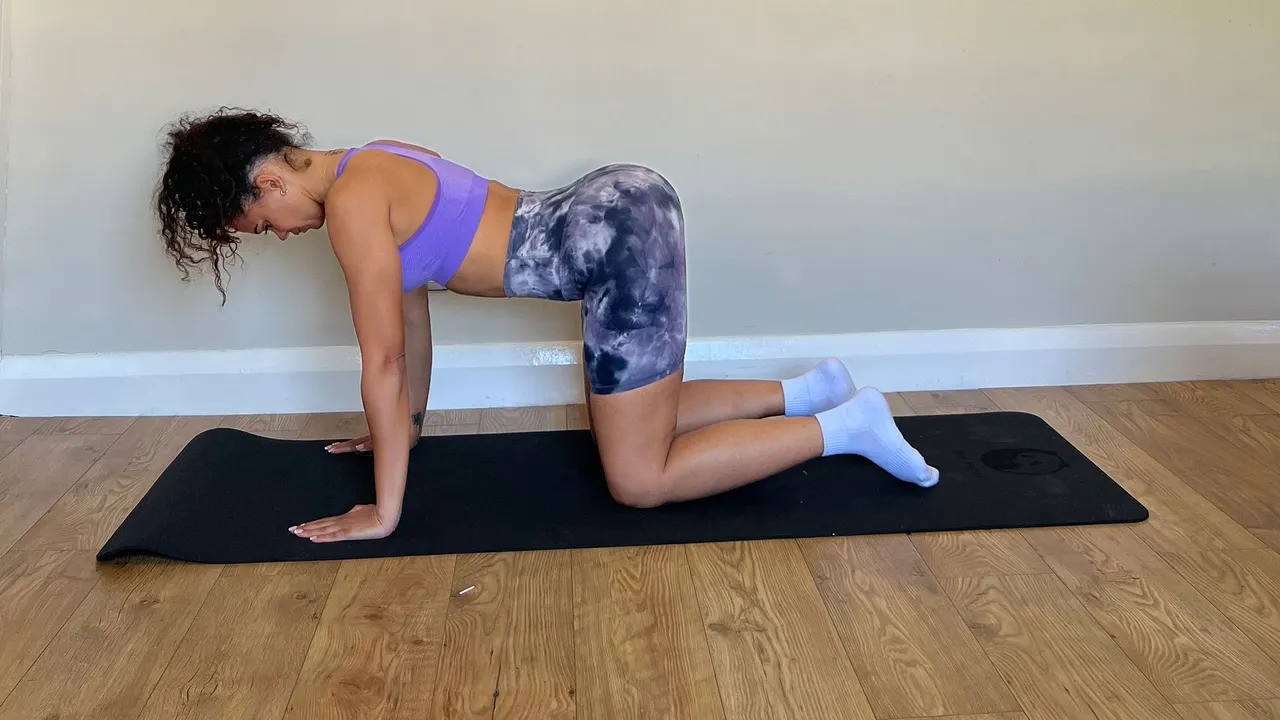
Cow stretch
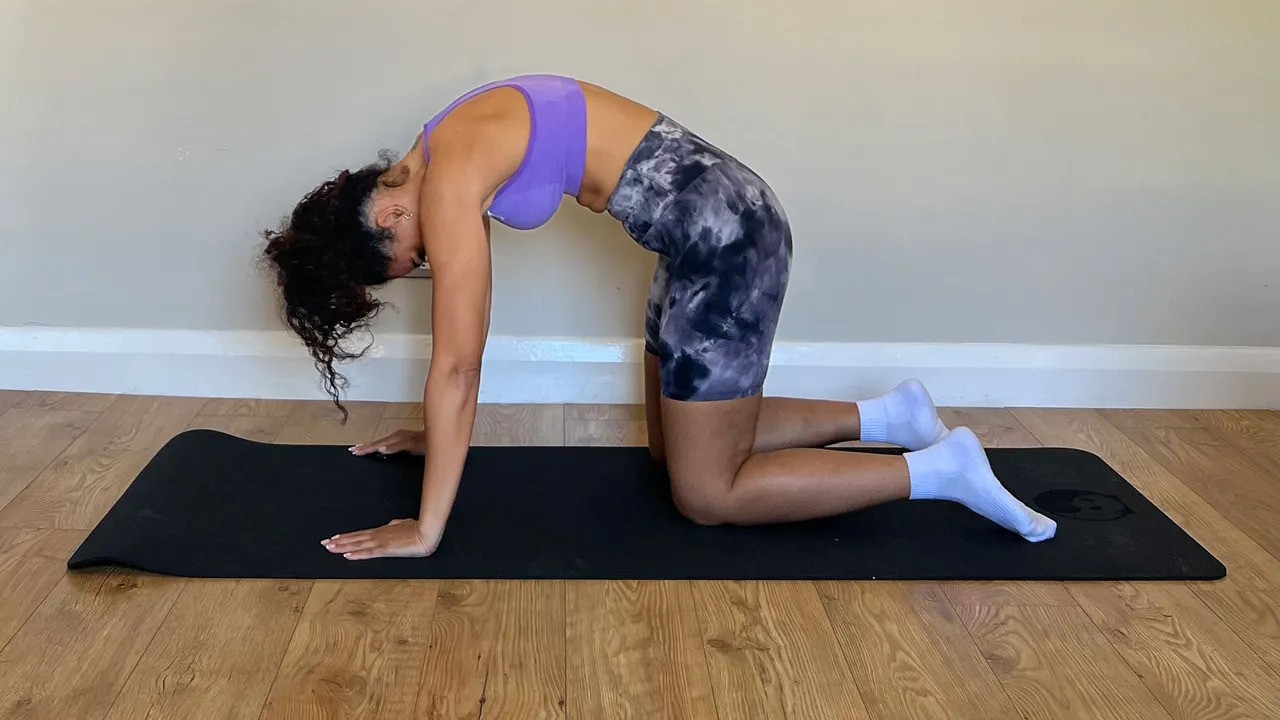
Cat pose
Cobra
- Lie on your front, toes tucked under.
- Place your hands palms down on the ground beneath your shoulders.
- Lift your chest up off the ground by straightening your arms and pushing into the ground.
- Gaze towards the ceiling and feel the stretch in your lower back.
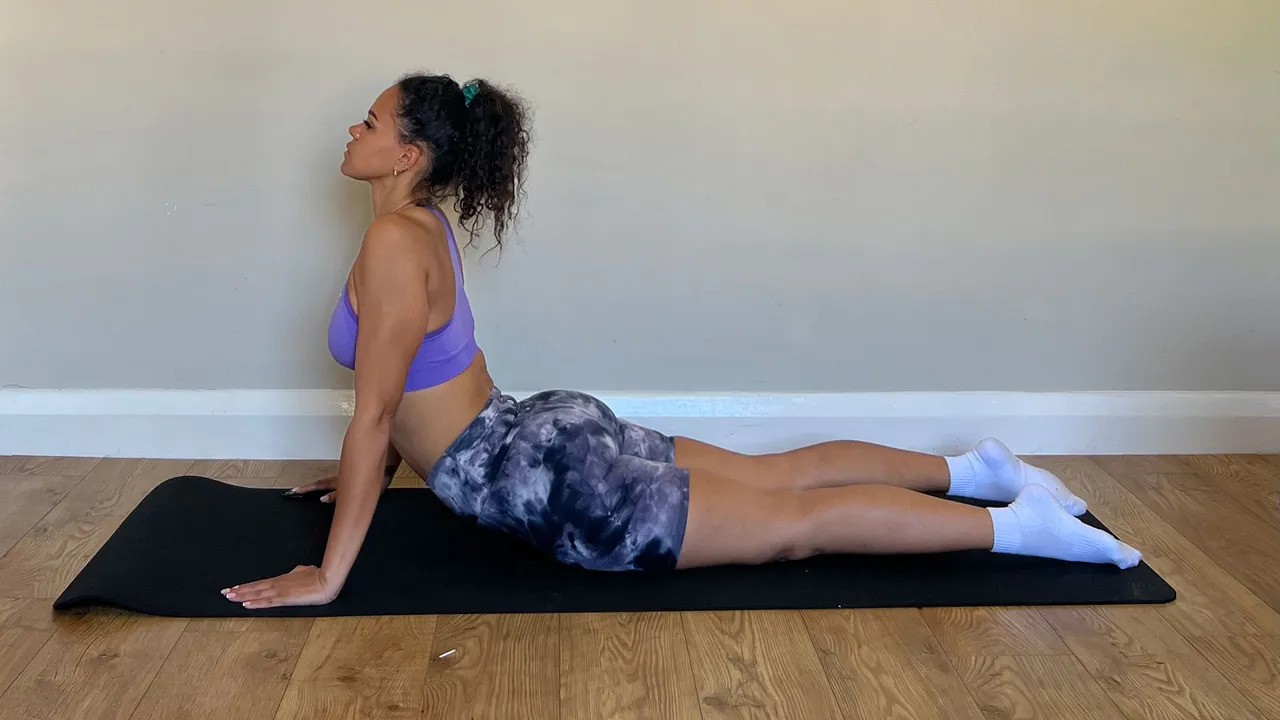
Cobra pose
Thread the needle
- Start in a neutral position on all fours, keeping your hands under your shoulders and your knees under your hips.
- Open up your chest to the right as you raise your right arm toward the ceiling. Direct your eyes toward your raised hand.
- Then move your right arm under your chest toward the mat. Threading your arm through the space between your torso and the other arm, Your torso should naturally shift to face downward.
- Keep both knees and your left arm grounded for support.
- Continue to slide your right arm onto the mat, allowing your right shoulder to rest on the mat.
- Extend your left arm straight in front of you so your fingertips touch the mat, and rest the right side of your head on the mat.
- Continue shifting your right fingertips to the left until you feel a stretch across your back and shoulder.
- Hold the pose and repeat on the other side.
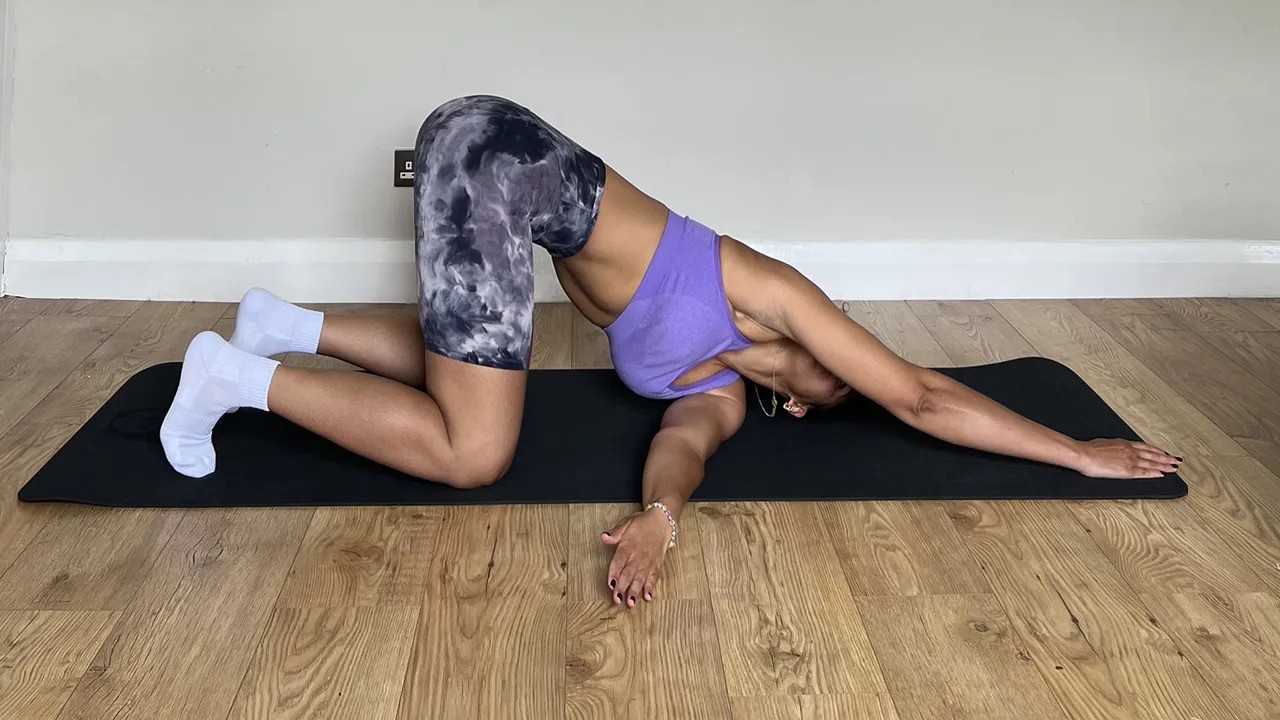
How long should a beginner hold a plank?
The world record for holding a plank is four hours, but luckily we won’t be advising you to start with this!
Jade tells us: "For a complete newbie to exercise, 15-20 seconds with will be a great way to build up strength in your core to start with. Slowly increase this by 10-15 seconds at a time until you have built up to around one minute. Sets of one-minute planks is a perfect duration to challenge yourself and build up your strength."
When will I start to see results?
Building strength and muscle doesn't happen overnight. During the first weeks of strength training, your brain responds to exercise by recruiting more motor units with each muscle contraction. "This means you have more muscle fibers working and this increases the force you can generate, thus meaning your strength increases", says Jade. "So although you may not notice muscles popping just yet you will definitely notice you are a lot stronger within a few weeks."
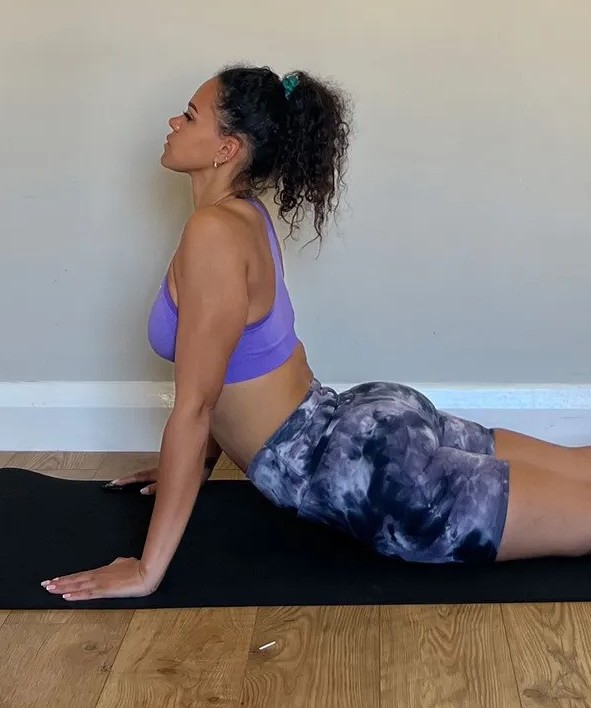
"As a Personal Trainer, my passion is to guide people towards a healthier lifestyle. Everybody is unique, with their own strengths and limitations. My method is to build a custom plan based on your health, schedule and more importantly, fitness goals. With a speciality in strength training, I aim to transform your body and help you be the best version of yourself.
I love helping women lift weights and gain confidence in the gym. As a pre and postnatal specialist (and mother of two), I understand the importance of staying fit during and after your pregnancy."
Continue reading

From building healthy family relationships to self-care tips for mums and parenting trends - Daniella also covers postnatal workouts and exercises for kids. After gaining a Print Journalism BA Hons degree and NCTJ Diploma in Journalism at Nottingham Trent University, Daniella started writing for Health & Wellbeing and co-hosted the Walk to Wellbeing podcast. She has also written for Stylist, Natural Health, The Sun UK and Fit & Well. In her free time, Daniella loves to travel, try out new fitness classes and cook for family and friends.
-
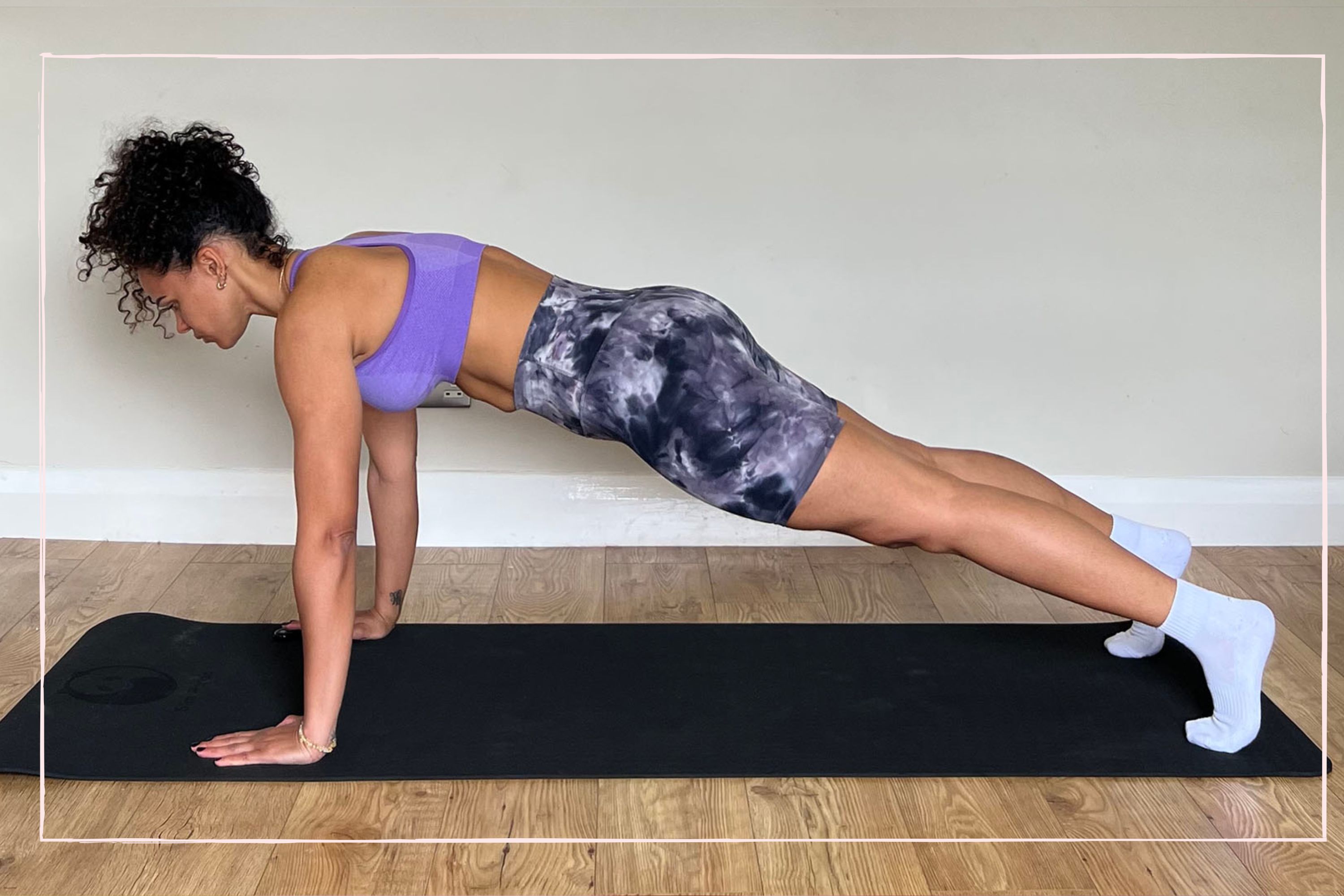 How to do a push-up: Follow this 30-day plan - building up to a full bodyweight workout
How to do a push-up: Follow this 30-day plan - building up to a full bodyweight workoutFollow our 30-day press up challenge to strengthen your upper body – beginning on the knees and gradually building up to a full bodyweight workout
By Daniella Gray Last updated
-
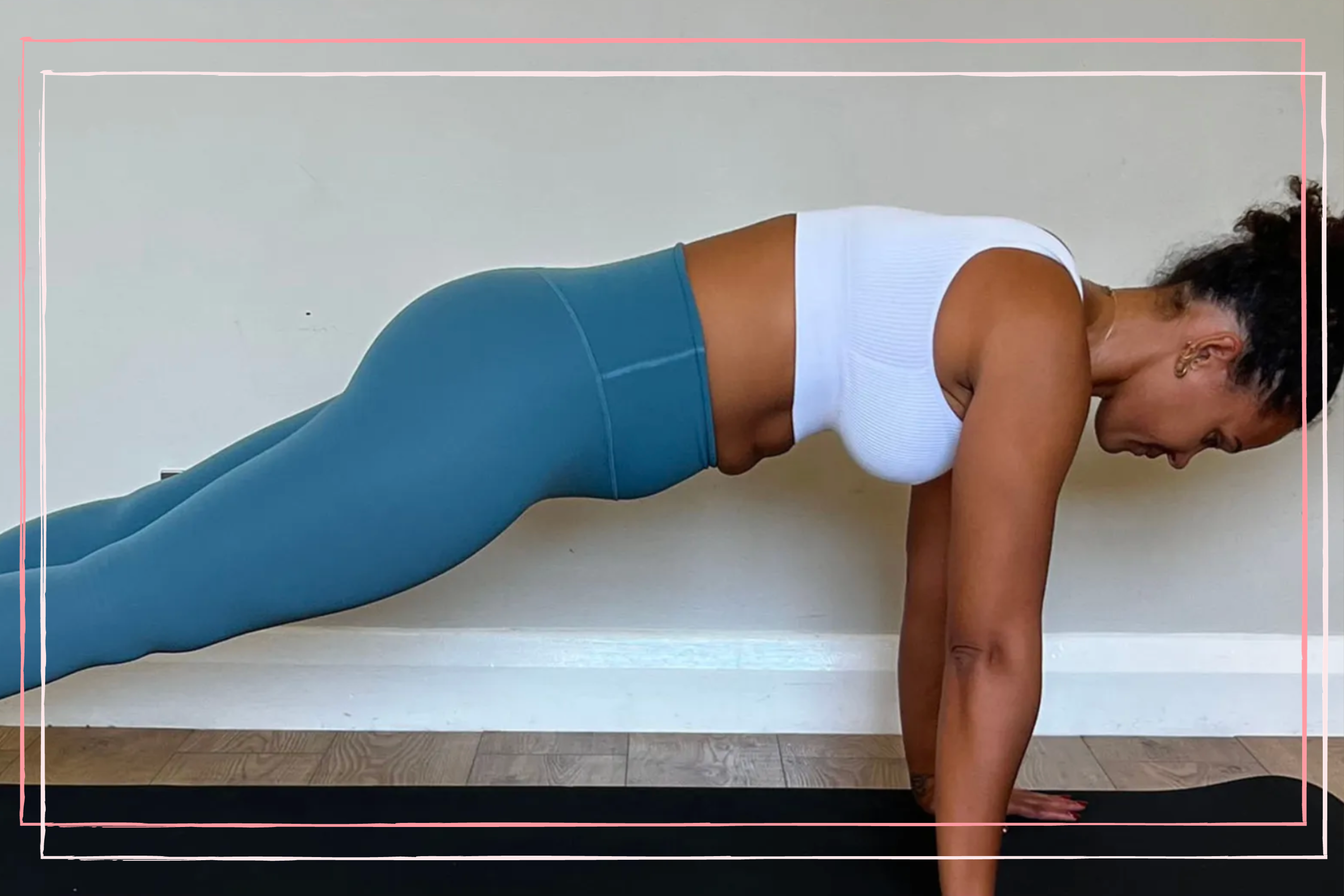 Burpees for beginners: The benefits and how to do them with the proper form
Burpees for beginners: The benefits and how to do them with the proper formDiscover how to do burpees with our 30-day challenge workout - as demonstrated our fitness expert
By Daniella Gray Last updated
-
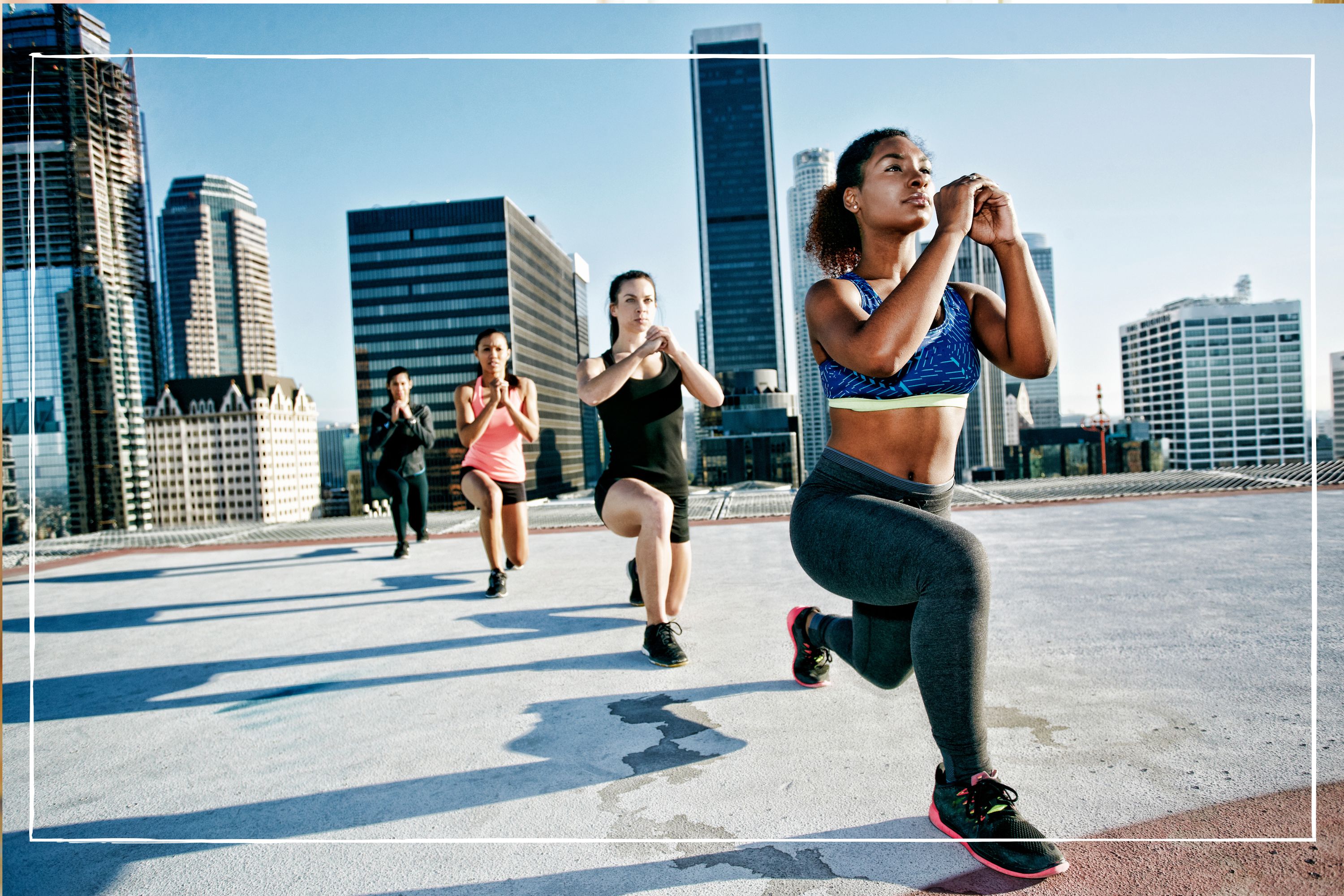 Thigh exercises: Tone up with our 30-day challenge
Thigh exercises: Tone up with our 30-day challengeThigh exercises to tone up, and improve strength - follow fitness trainer Jade Hansle's 30-day challenge
By Daniella Gray Last updated
-
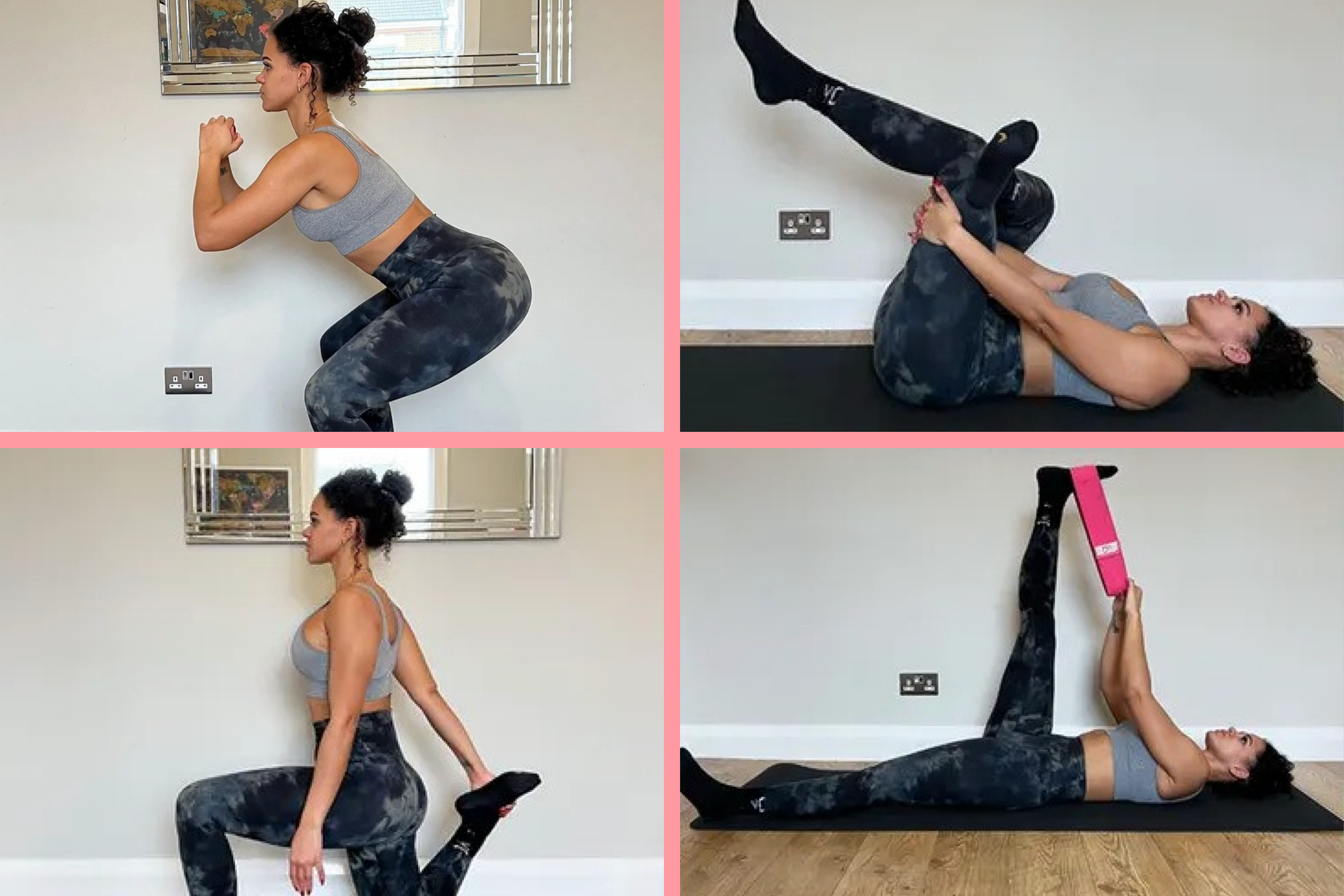 Your 30-day guide to mastering the perfect squat
Your 30-day guide to mastering the perfect squatDelve into this guide tailored specifically for new mums seeking to master the art of the perfect squat
By Daniella Gray Last updated
-
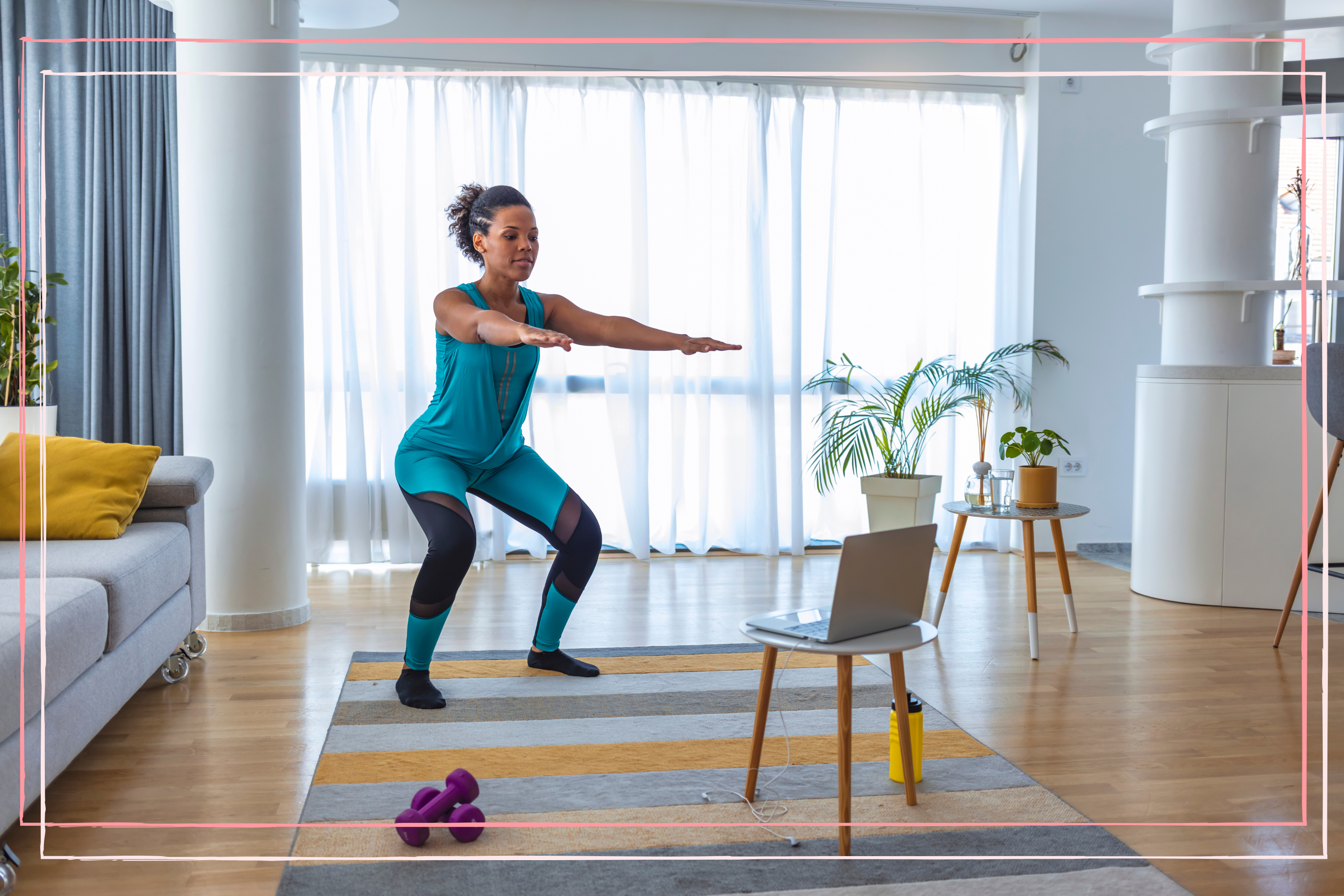 Get fit from home with our 30-day HIIT workout challenge
Get fit from home with our 30-day HIIT workout challengeHigh intensity interval training is great for time-strapped mums – try these five moves for an all-round workout to get you fit at home
By Daniella Gray Last updated
